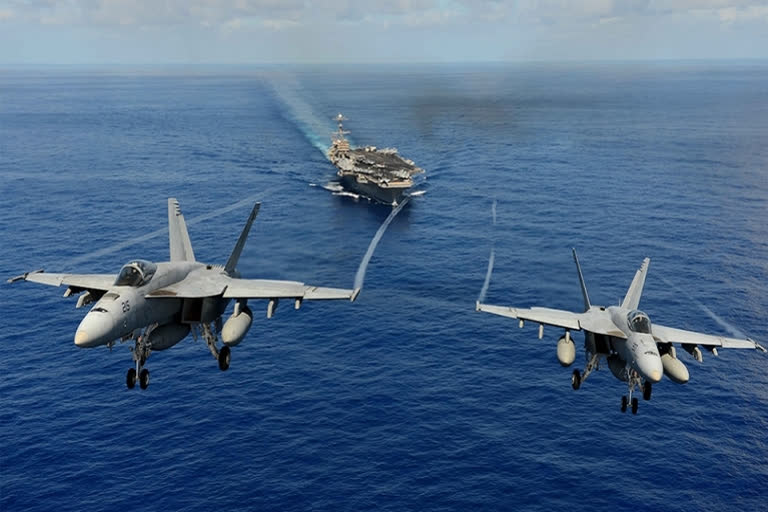Washington:Boeing is planning to fly two Super Hornet fighter jets to Goa this summer for operational demonstrations before its potential buyer the Indian Navy, according to a senior company executive. Making a strong sales pitch for F/A-18 Super Hornet, vice president of Boeing's India Business Development Alain Garcia said the aircraft has been specifically designed from its inception for carrier operations, can operate from the Indian Navy aircraft carriers and will meet or exceed the STOBAR performance requirements of the Indian Navy. "This has been proven by our successful ski-jump tests conducted in 2020 and extensive simulation studies. Additionally, we will also prove that further with operational demonstrations in India in May and June," Garcia told PTI in an interview.
As New Delhi plans to strengthen its defence capabilities, Boeing has been in talks with its defence customers in India about F/A-18 Super Hornet, P-8I, F-15EX, KC-46 tanker for aerial refuelling and ISR capabilities, he said. "I really believe the F/A-18 Super Hornet Block III will be a transformative capability for the Indian Navy, the way the P-8I has been...and also the impact that it will have on the aerospace industry, he argued. The senior Boeing executive, who is headed to India for his new assignment in the next few weeks, argued that with the Super Hornet, the Indian Navy will get a proven, multi-role and carrier-compatible fighter while benefiting from the investments, upgrades and knowledge that comes from the US Navy's extensive naval aviation ecosystem.
The US Navy operates more than 800 Super Hornets and EA-18 Growlers, the electronic attack version of the F/A-18. With the latest Block III configuration, the Super Hornet is suited to protect India's maritime interests, and we anticipate the Super Hornet and P-8I will open up opportunities for greater interoperability between the two navies for a secure Indo-Pacific, he said. According to Garcia, with a rapid technology insertion plan, the Super Hornet Block III will outpace threats for decades to come. "The Block III Super Hornet comes with advanced networking and open architecture design that allows it to work jointly with the Indian Navy's P-8I and other US-origin assets and rapidly accept new technology to stay ahead of emerging threats, he said.
And lastly, the Super Hornet has an affordable acquisition cost and also costs less per flight hour to operate than any other tactical aircraft in the US forces inventory, including single-engine fighters. This is possible because the fighter is designed for ease of maintainability and offers impressive durability, he argued. On the P-8I, Garcia said there is clearly a need for long-range maritime surveillance and anti-submarine warfare (ASW) requirements in the Indian Ocean Region. The P-8Is have demonstrated an excellent record in supporting the Navy's missions and have surpassed 35,000 flight hours since induction in 2013, he said.
Read:Rajnath Singh meets executives of US aerospace giants Boeing and Raytheon
